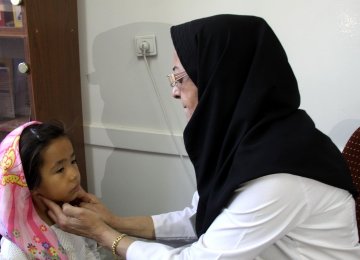National Doctor’s Day is observed every year on August 23 on the birth anniversary of Avicenna, the 10th-century Iranian philosopher, physician and scientist. The occasion is an opportunity to pay respects to the medical fraternity, mainly physicians who have made great contributions to the national health system.
According to the World Health Organization, in order to meet health-related Millennium Development Goals, the minimum health staff density threshold is 23 doctors, nurses and midwives per 10,000 population, Salamat News reported
Currently, that ratio in Iran is 20 per 10,000 people, according to data released by the Iran Medical Council. Iran’s population is 80 million.
“Although a long way from the standards of developed countries, Iran’s physician-per-people ratio is decent compared to regional countries,” says Ali Maher, a deputy at the Health Ministry. He did not name the countries.
Nonetheless, Iran’s health system still faces a big shortage of specialized staff in several medical fields. Training human resources has been a priority of the Health Ministry. One oft-mentioned problem is that human resources and investments tend to be concentrated in urban areas, so per capita figures may be an inaccurate indicator of the ratio of health personnel to the entire population.
To help solve the problem of shortage of physicians in rural areas, 2,000 specialists in 27 medical fields were dispensed in November across 580 state-run hospitals in 378 cities.
Most specialists sent to remote areas are active in the fields of internal medicine, pediatrics, obstetrics and gynecology.
Annually, 8 million people are admitted to hospitals and their average length of stay is 2.7 days. Iran has 550 state-run and 350 private hospitals.
In February, Health Minister Seyyed Hassan Qazizadeh Hashemi said there was a lack of medical specialists in the country. Currently, there are about 4.8 specialists per 10,000 population while the average figure is 32 specialists in European countries.
According to Mohammad Aghajani, deputy minister of health for treatment, the shortage of specialists is more in neurosurgery, radiology, and orthopedics Currently, there are 78,000 general practitioners, 36,000 specialists, 24,000 general dentists, 2,000 dental specialists, 36,000 midwives, and 15,000 physiotherapists, nutritionists, optometrists, and audiologists. Almost 40% of all physicians work in Tehran Province, home to over 13 million people.






Add new comment
Read our comment policy before posting your viewpoints